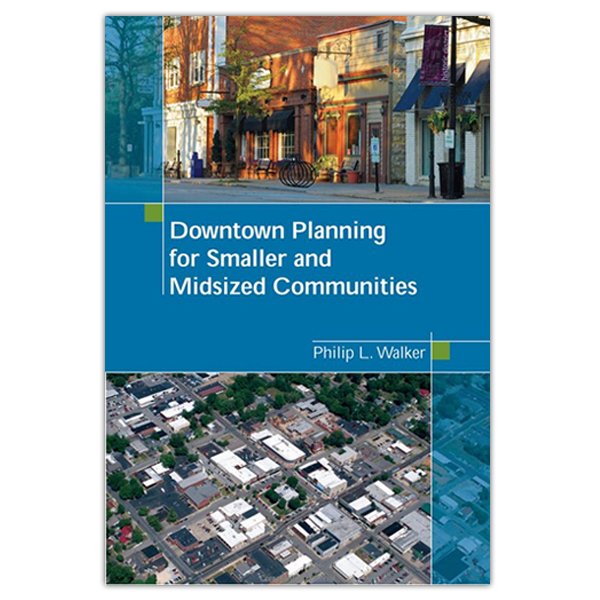Description
A good plan will help revitalize a struggling downtown and sustain a successful one. This comprehensive book looks at all facets of planning for the traditional downtown or Main Street community.
While the term downtown plan often brings to mind physical planning issues, author Philip L. Walker presents a holistic approach to planning, which considers all of the basic dimensions of a downtown — physical, economic, social, and political.
He also explains how to develop an organization to implement a downtown plan; how federal, state, and local policies may influence the planning process; and how to fund a downtown revitalization effort.
With numerous graphics and real-world examples, Downtown Planning for Smaller and Midsized Communities is a valuable guide for anyone interested in improving their downtown.
Table of Contents
- The Groundwork Before Planning
- What prompts a plan?
- Keeping planning in perspective
- Selling the need for a plan
- The Process of Preparing a Downtown Plan
- Diagnostic phase: Research and analysis
- The big ideas: Creating the concept plan
- Rolling up your sleeves: Draft plan preparation
- Finalizing the plan
- What happens after the plan
- The Physical Plan
- Land uses: Mix them up
- Blocks, lots, streets, and alleys
- Making your downtown pedestrian friendly
- Parking
- Loading areas
- Transportation alternatives
- Buildings
- Signage
- Public spaces, art, and interpretation
- Infrastructure and utilities
- Harnessing Mother Nature
- The Economic and Marketing Plan
- Understanding the market
- Identity development
- Centralized retail management
- Business development
- Marketing and promotion
- Social issues
- Implementation strategy
- Organizational structure
- Public policy
- Funding and financing
- Priorities, assignments, and phasing
- What is Really Important?
About the Author
Philip L. Walker, AICP, is the principal of the Walker Collaborative, which is involved in downtown planning and neighborhood revitalization, historic preservation, and community visioning.

